Cool Jobs: Head in the clouds
Three scientists see very different things when they look at the sky

Clouds and fog can be pretty or annoying, depending on your viewpoint. They also can make great subjects for scientific research.
By Beth Geiger
Along a sun-drenched coastline, puffy little clouds stretch to the horizon like a vast set of beach umbrellas. Strolling along the sand or splashing in the surf, you probably wouldn’t even notice them.
Paquita Zuidema does, though. She is an atmospheric scientist at the University of Miami in Florida. And she notes that most people don’t appreciate these marine low clouds. “They aren’t very interesting from a weather point of view,” she admits. They’re small. They don’t cause big storms. They barely even produce rain. Yet marine low clouds intrigue her far more than other, flashier ones.
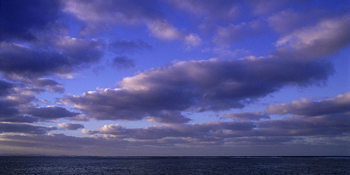
In part because there are so many of them, these clouds are very effective at reflecting sunlight, she explains. Layers of the bright white clouds can stretch for miles. By keeping some of the sun’s energy from reaching Earth’s surface, those clouds help keep Earth relatively cool.
When most of us see clouds, we see animal shapes, a chance of rain or maybe a bit of welcome shade. Scientists, such as Zuidema, see much, much more. For these researchers, clouds are an integral part of the planet, transferring water, dust and even life around the globe.
Little clouds that can
As a kid, Zuidema wanted to be a naturalist — a scientist who looks at the natural world in a broad way. She now thinks that was “kind of a romantic vision.” When she got to college, she picked what she thought was a more practical path, studying physics along with public policy. That combination led her to atmospheric sciences.
But Zuidema didn’t really notice low clouds until graduate school at the University of Washington, in Seattle. That city “has a lot of low clouds,” the scientist says. She suddenly realized how important their reflection of heat back into space was for Earth’s climate. She continued studying low clouds at the University of Colorado in Boulder. There she earned her PhD.
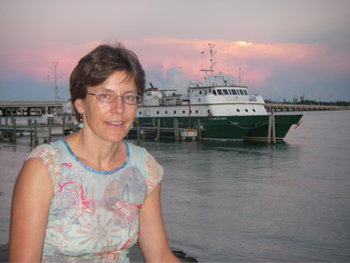
Seattle’s skies may be home to plenty of low clouds, but there are even better places to spot these little puffs. The greatest gatherings tend to occur off the coasts of places like Namibia, in Africa, and northern Chile. These places are home to some of Earth’s driest deserts. At about 430 to 600 meters (some 1,400 to 2,000 feet) above the surface, moist air rising from the ocean cools and condenses into clouds. But instead of growing taller, the clouds are trapped by the dry, sinking air that creates desert conditions. The result is a layer, or deck, of marine low clouds. They can stretch for miles.
“The marine clouds are trying to rise but are being squished down,” Zuidema explains. Though most of these clouds form over oceans, they can be found anywhere warm moist air is pressed down by dry, descending air.
The more Zuidema learns about these little clouds, the more fascinating she finds them. “I’m really interested in the myriad ways these low clouds respond to their environment,” she says. Because there are so many low clouds, and because they help keep Earth cool by reflecting heat, anything that affects them can also affect overall climate. “It feeds back to the whole energy balance of the planet,” she explains.
Lately Zuidema has been exploring how smoke that drifts over decks of marine clouds might change the way that these clouds absorb or reflect sunlight. Such smoke — from burning trees and grasses — can drift thousands of kilometers. If that smoke affects clouds, it might also affect climate. Last year, she spent a month on remote Ascension Island in the South Atlantic Ocean setting up instruments to track the interaction between low clouds there and smoke from southern Africa.
Zuidema appreciates the variety in her work. Besides the occasional trip to distant islands, she also teaches and collaborates with other scientists to better understand Earth’s climate system. Along the way, she’s helping elevate one type of low cloud into the spotlight it deserves.
Catch and release clouds
The ancient West African town of Sidi Ifni sits on the coast of Morocco. Here, on the edge of the bone-dry Sahara Desert, there’s never seems to be enough water to go around. For many women and girls here, carrying water from distant wells has become a day-long chore. As drought has worsened, many villagers have simply left. Today, communities and traditions there are crumbling.
Yet, half the year, water surrounds Sidi Ifni. There’s just one big problem: It’s locked into dense fog — clouds that touch the ground. Sidi Ifni isn’t alone. Thirsty coastal dwellers in Peru, Chile and Namibia also suffer thirst, even as they also are often cloaked in moist fog.
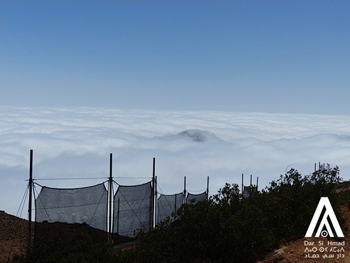
But imagine catching that water, the way spider webs get drippy in the mist.
In fact, people have figured out how to do just that. Some have set up tall nets high above dusty-dry villages at sites spanning from Morocco to Peru. Fog condenses onto the nets, then runs into tanks. At Sidi Ifni, fog nets now reel in about 6,300 liters (1,700 gallons) of water per day. That’s enough for 400 people. It also means that this town has a future again.
Still, fog catching is far from perfect. The nets need wind to push the fog into them. So the nets must be vertical. And that means they can get blown over. Plus, they work only when the fog is very dense.
Thousands of miles from Morocco, Catarina Esteves is working on improving this method of mining water from fog. Esteves is a materials scientist at Eindhoven University of Technology in the Netherlands. She has invented a high-tech fabric that she hopes will help wring even more water from the sky.
Esteves grew up on the coast of Portugal. There, she had plenty of access to water. Indeed, she used to regularly hang out at the beach. In college, she started out studying chemistry. With time, though, she changed her focus to materials science, which combines engineering with chemistry. After earning her PhD, she joined the faculty at Eindhoven.
This researcher likes that she can apply materials engineering to solve real-world problems. She is especially interested in nanomaterials: extremely small substances.
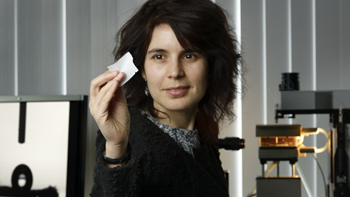
“One of my fields of interest is called ‘smart coatings,’” she says. She creates these with nanomaterials. Coatings, such as paint, are everywhere, she explains. But her nano-based coatings go much further. “We call it ‘smart’ because it responds to different needs.”
For instance, one of her students, a few years ago, wanted to create a nano-coated smart fabric. The goal was that it should switch from attracting water to repelling it. Imagine how sweat-soaked athletic clothes would dry instantly.
So her team experimented, coating cotton with nanomaterials.
Eventually, the team produced a fabric with remarkable moisture-capturing properties. “We found it had an extreme ability to draw water, even from air,” says Esteves. Better yet, the nano-coated cotton will release the water automatically. “From 18 to 30 degrees Celsius [64 to 86 degrees Fahrenheit], it soaks up water,” she notes. Once the temperature gets a bit warmer than that, the fabric switches and “releases all the water.”
When Esteves heard about the idea of fog-catching, “Suddenly, a light bulb went off.” The scientist thought: “What if we were able to use this fabric to draw water from fog?” The novel fabric’s unusual properties meshed perfectly with fog mining. This fabric could sponge up water when the air is cool and misty, then release it as that fog gives way to hot, sunny skies.
Right now, her team’s smart fabric is still in the experimental phase. That means it’s not quite ready for real-world projects, Esteves says. But someday, she hopes, it will be the super-soaker of fog catching. “It could really make people’s lives better,” she says.
Riding high
Dale Griffin’s favorite clouds aren’t white and puffy, like Zuidema’s. They aren’t even made of water vapor, as is Esteves’ fog. Instead, his go-to clouds are thick airborne plumes of African dust.
Griffin didn’t always study clouds. With a master’s degree in public health and a PhD in microbiology — the study of germs — he began his career tracking waterborne bacteria that can make people sick. His job included flushing a colored chemical down people’s toilets to determine where the now-colored water went.
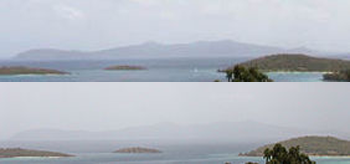
Then Griffin learned about another place microbes might be hiding: high in the sky. Intense winds regularly scour dust from the deserts of North Africa. Each year, at least 1.5 billion tons of this red dust sail from one side of the Atlantic Ocean to the other. Those clouds of dust helped build Caribbean Islands, such as the Bahamas and the Virgin Islands. They nourish the lush forests of the Amazon. Some of that dust even migrates to the United States. If you bite into a tomato from Florida, chances are it was grown in soil that started as African dust.
Yet until about 15 years ago, scientists figured that any bacteria or fungus picked up along with the dust would die on its journey across the ocean. “Most people thought that ultraviolet exposure [from the sun] would kill anything,” Griffin explains.
Then one day Griffin saw a satellite image of a massive dust cloud blowing off of North Africa. He began to question whether those scientists had been right. “That cloud of dust was the size of Spain,” he says. “I thought, we should be able to find something in that.” That moment, he now recalls, was “game-changing.”
Story continues below image.
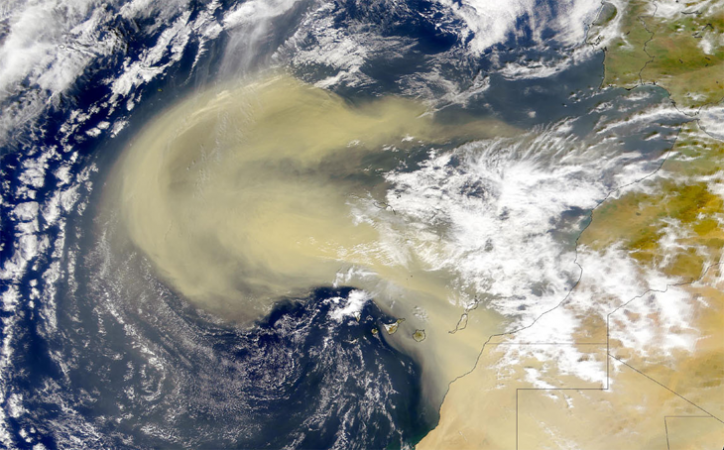
Intrigued, Griffin joined the U.S. Geological Survey (USGS) in St. Petersburg, Fla. This agency had been looking for someone to study airborne germs. There’s even a name for what is now his field of research: aeromicrobiology.
To determine what might be living in those gritty clouds, Griffin and his colleagues collect air samples from Caribbean hilltops on days when African dust turns the sky orange. They place the samples in petri dishes. Then they wait and watch to see what grows. A petri dish is a shallow dish used to nurture bacteria and other microbes. In one of them, a single cell may proliferate into a whole colony. And having a colony makes it easier for scientists such as Griffin to identify and study the cellular residents under a microscope.
Griffin has found that most sky-high microbes do die as they sail across the Atlantic skies. Still, there also are plenty of survivors.
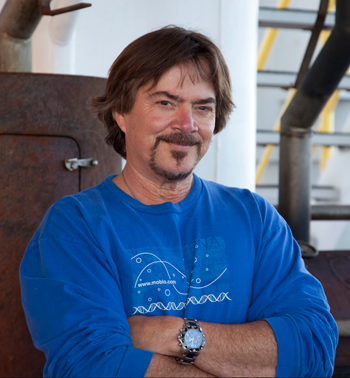
“When you are talking about this much quantity, it doesn’t matter if you kill off 95 percent,” he says. The ones that survive tend to have been those that travelled near the bottom of the dust clouds. There they would have been screened from much of the sun’s harmful rays.
Cells with natural pigments, rather than being transparent, also have a better chance of making it. That pigment acts like a sunscreen, protecting those high-flying cells from killer rays.
The journey takes three to five days. So far, about one-fifth of the living survivors that Griffin and others have identified blowing in the wind can cause disease. One type infects ocean corals. Another can sicken sycamore trees. Scientists have even discovered pesticides, tiny amounts of metals and live grasshoppers riding the skies on African dust clouds.
Griffin likes his work and appreciates the freedom he has with the USGS. “They encourage innovation and different ideas that help us understand how the whole planet functions,” he says. That freedom gives him the chance to imagine and explore the unexpected connection between microbes, disease and long-distance dust.
After all, most people just think of rain when they look at a cloud. Griffin’s view is different. “I look at a cloud,” he says, “and I think ‘life!’”
This is one in a series on careers in science, technology, engineering and mathematics made possible with generous support from Arconic Foundation.







